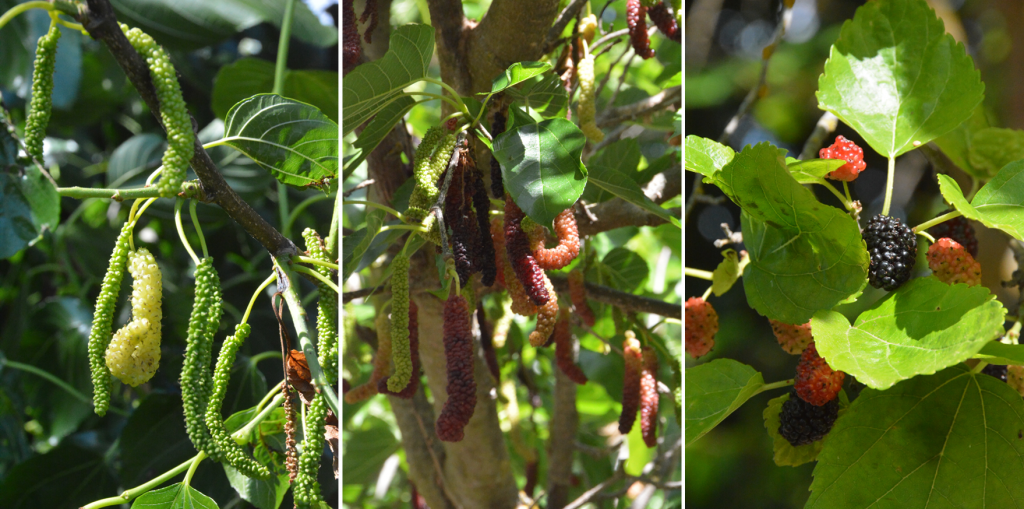Mulberry Collection
Jenny Smith, USDA-ARS National Clonal Germplasm Repository, One Shields Drive, University of California, Davis, California 95616
Gayle M. Volk, USDA-ARS National Laboratory for Genetic Resources Preservation, 1111 S. Mason St., Fort Collins, Colorado 80521
John E. Preece, USDA-ARS National Clonal Germplasm Repository, One Shields Drive, University of California, Davis, California 95616
Outline
1. Introduction
Mulberry (Morus) trees are traditionally valued for their leaves, which serve as food for silkworms. There are three major types of mulberry trees that are commercially grown: white mulberry (Morus alba L.) from East Asia, black mulberry (M. nigra L.) from southwestern Asia, and red mulberry (M. rubra L.) from the central and Eastern United States (Weeks, 2003). Mulberry fruit can be eaten fresh, cooked, or the juice may be added as a flavoring. Fruit are mostly marketed and sold locally, due to their perishability.
Mulberry trees may grow up to 50 feet tall in hardiness zones 4 to 9. Trees may be monoecious or dioecious, with pollen produced on catkins. Trees are wind-pollinated. Fruit can range in size from 0.2 to 3 inches and in shades from white to red to black.
2. morus (mulberry) collection
The U.S. National Plant Germplasm System Mulberry collection has 72 accessions representing seven taxa that are maintained as trees in the field.
Figure 1. Variation in mulberry fruit in the U.S. National Plant Germplasm System mulberry collection. Photo credit: Gayle Volk.
Video 1. Dr. John Preece discusses the mulberry collection.
3. references
Weeks S. 2003. Red and white mulberry in Indiana. Purdue University cooperative extension service. https://www.extension.purdue.edu/extmedia/FNR/FNR_237.pdf
4. additional information
Curator: Jenny Smith, USDA-ARS National Clonal Germplasm Repository, One Shields Drive, University of California, Davis, CA 95616-8607, jenny.smith@usda.gov
5. Acknowledgments
Citation: Smith J, Volk GM, Preece JE. 2021. Mulberry collection. In: Volk GM, Preece JE (Ed.) Field tour of the USDA National Clonal Germplasm Repository for Tree Fruit, Nut Crops, and Grapes in Davis, California. Fort Collins, Colorado: Colorado State University. Date accessed. Available from: https://colostate.pressbooks.pub/davisrepositoryfieldtour/chapter/mulberries/
This training module was made possible in part by funding from USDA-ARS, Colorado State University, and the United States Agency for International Development (USAID).
Editors: Emma Balunek, Gayle Volk, Katheryn Chen
This project was funded in part by the National Academy of Sciences (NAS) and USAID, and any opinions, findings, conclusions, or recommendations expressed in such are those of the authors alone, and do not necessarily reflect the views of USAID or NAS. USDA is an equal opportunity provider and employer. Mention of trade names or commercial products in this article is solely for the purpose of providing specific information and does not imply recommendation or endorsement by the US Department of Agriculture.



